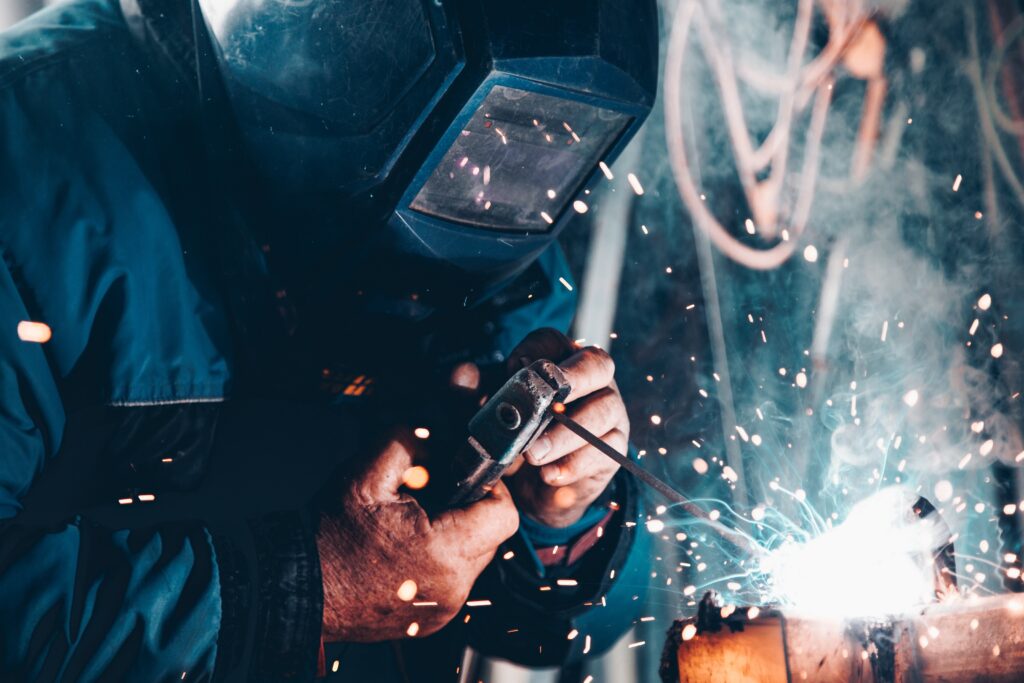Working in confined spaces poses unique challenges and risks that demand strict regulatory measures to minimize those risks on behalf of employees’ well-being. The importance of adhering to these regulations cannot be overstated, as confined space incidents can lead to severe consequences.
Definition of Confined Spaces
Regulatory bodies define confined spaces as areas with limited entry and exit points, not designed for continuous occupancy. These spaces may present hazards such as restricted airflow, hazardous atmospheres, or the potential for engulfment.
Regulations
The regulations about working in confined spaces differ from country to country. We insist that you check your local official resources and advisories before starting to operate at height in confined spaces.

Risk Assessment
Thorough risk assessment always has to be done before working at height no matter if it is a confined space or not. JLG summarizes risk inspection in 4 main steps.
Step 1: Workplace inspection. Has to be conducted before the use of MEWP. Ask yourself “Is the workplace safe?” Or “What are the hazards?” During the MEWP operation constantly monitor the workplace and the changes happening there.
Step 2: Pre-start Inspection: In this step you have to make sure that the MEWP you’re going to operate is in a good condition. Assess if the machine is safe visually and functionally. More about how to conduct risk assessment you can read in the following article: Working at Height Risk Assessment : a Comprehensive Guide – Power Towers
Step 3: Proper operation. During the use of MEWP stay focused and monitor the environment around you. Do not neglect the operation manuals and instructions, and follow them while using the machine.
Step 4: Proper Shutdown. After the work is finished, keep your machine is a safe and secure location.
In the confined spaces specifically, identifying potential hazards, such as toxic atmospheres, flammable substances, or physical obstructions, is crucial for implementing appropriate control measures.
Permit-Required Confined Spaces
Certain confined spaces, known as permit-required confined spaces, have additional safety requirements. These include the need for a confined space entry permit, atmospheric testing, and the presence of an attendant outside the confined space to monitor the workers inside.
Employee Training
Regulations stress the significance of adequately training employees involved in confined space work. Workers must be familiar with potential hazards, emergency procedures, and the proper use of personal protective equipment (PPE).
Continuous Monitoring
Continuous monitoring of confined spaces, both for atmospheric conditions and the well-being of workers, is mandated. This includes pre-entry testing and periodic monitoring to ensure a safe working environment throughout the task.
Emergency Response
Preparedness for emergencies is a cornerstone of confined space regulations. Employers must establish and communicate emergency procedures, including rescue plans and the provision of necessary rescue equipment.
To summarize, compliance with confined space regulations is not just a legal requirement. It is a commitment to ensuring the safety and health of workers. By understanding and adhering to these regulations, employers create a workplace culture that prioritizes the well-being of those working in confined spaces. Regular training, thorough risk assessments, and continuous monitoring are essential components of a comprehensive approach to safeguarding employees in these challenging work environments.
To learn more about Power Towers products check the following page: Pristupne platforme · Kupite radne platforme | Power Towers
For any questions regarding Power Towers MEWPs reach out to us through: Contact Us – Mobile elevated platforms | Power Towers

